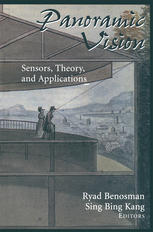

Most ebook files are in PDF format, so you can easily read them using various software such as Foxit Reader or directly on the Google Chrome browser.
Some ebook files are released by publishers in other formats such as .awz, .mobi, .epub, .fb2, etc. You may need to install specific software to read these formats on mobile/PC, such as Calibre.
Please read the tutorial at this link: https://ebookbell.com/faq
We offer FREE conversion to the popular formats you request; however, this may take some time. Therefore, right after payment, please email us, and we will try to provide the service as quickly as possible.
For some exceptional file formats or broken links (if any), please refrain from opening any disputes. Instead, email us first, and we will try to assist within a maximum of 6 hours.
EbookBell Team

4.4
92 reviewsCurrent cameras are poor imitations of the human eye and close descen dants in their design of ideas and a technology that are more than a century old. People in computer vision have traditionally used off-the-shelf cameras that were not meant for the uses they were intended for by these researchers: off-the-shelf cameras are designed to capture images to be printed on paper or looked at on a television screen, not for guiding robots or making 3D models of the environment or even surveilling a large area where very large field of views, high geometric and photometric accuracies are necessary. Quite a significant part of the efforts in computer vision has been targeted at overcoming algorithmically these problems. The authors of this book convince us that it is possible to abandon the traditional route of using standard cameras and to follow the path of designing new cameras explicitly for solving the tasks at hand in computer vision applications. This leads to different design concepts and allows to alleviate many of the difficulties encountered in the processing of the images taken with the "traditional" cameras.